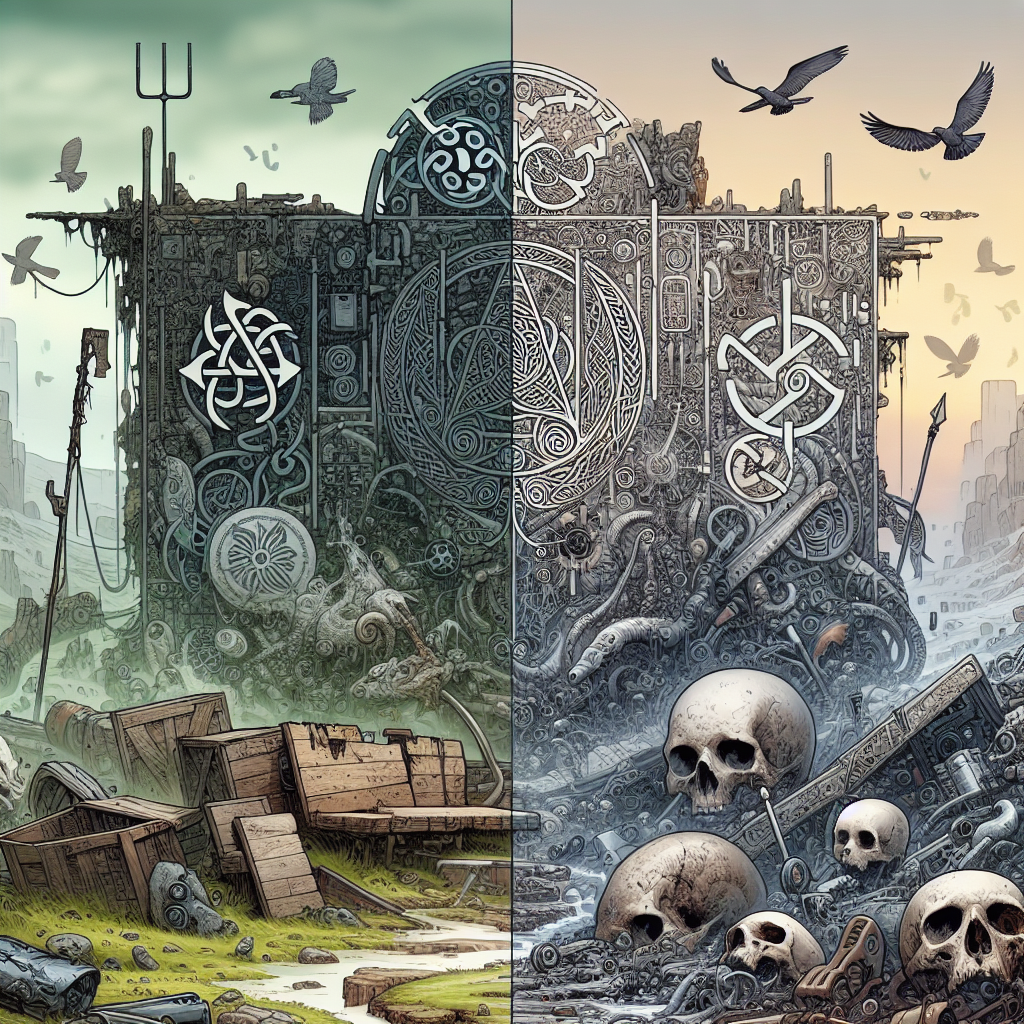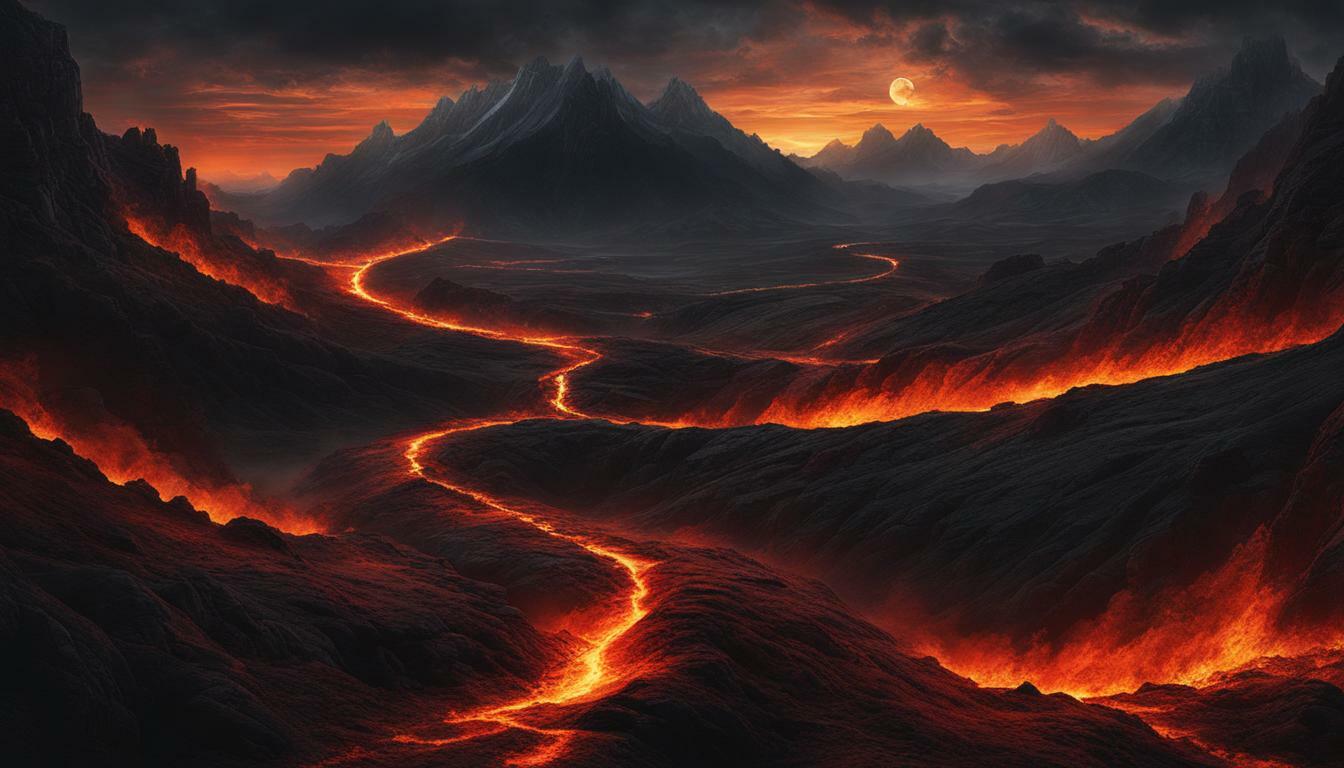Life After Death – A Spectacular Voyage into the Unseen
The concept of life after death is a fascinating one; it’s like staring into an abyss, a chasm filled with infinite mysteries and unending speculations. The mind, often enthralled by the enigma surrounding this topic, can’t help but ponder questions such as “what happens when we die?”, “is there really an afterlife?”, or “what does my religion tell me about what’s beyond the veil of mortality?” This article aims to delicately unravel the threads of these questions – focusing on two distinct religions: Islam and Hinduism. Islam and Hinduism represent two profound and rich spiritual traditions that have shaped civilizations for millennia.
Just as they vary in their rituals, practices, and views of God or gods, they offer contrasting perspectives on what awaits us after our terrestrial sojourn ends. The journey we’re about to embark upon will not only highlight these differences but also underscore any intriguing similarities.
The Enigma of Eternity: Decoding Afterlife
For starters, let’s delve into understanding the term ‘Afterlife.’ At its core, ‘Afterlife’ refers to a belief in existence beyond death. It is presumed to be a realm or state where essential aspects of ourselves – often referred to as our spirit or soul – continue their existence even after the physical body ceases functioning.
The perception varies among different cultures and religions; some perceive it as an eternal paradise or infernal damnation based on earthly deeds (like in Islam), others see it as continuous rebirth until liberation is achieved (as in Hinduism), while some may deny its existence altogether (such as atheists). Regardless of how it’s interpreted, the concept of ‘afterlife’ points towards one common theme—an enduring curiosity about what lies beyond our mortal coil.
Embracing Eternity: The Significance of Afterlife in Religion
Why should we bother about the afterlife? Shouldn’t we more concerned with the life we’re living now?
Well, it’s not that simple. The notion of afterlife plays a crucial role in shaping our moral and ethical framework, influencing our decisions and actions.
Religions often use the concept of afterlife as a form of moral compass guiding its followers, outlining rewards for virtue and punishments for vice in the hereafter. This belief system can have profound influence, motivating people towards ethical conduct and discouraging wrongdoing.
In religions like Islam and Hinduism, where moral duty (dharma) or submission to God (Islam) form a cornerstone of their teachings, belief in afterlife is not just an abstract philosophical concept but a tangible extension of earthly existence that impacts religious observance, social behavior, personal ethics and overall worldview. As we delve deeper into these religions’ perspectives on afterlife, you’ll see how intricately this concept is woven into their spiritual tapestry.
Islamic Perspective on Afterlife: The Eternal Journey
The Concept of Akhirah – A Glimpse into Eternity
The term Akhirah in Islam translates to the afterlife or the ‘hereafter.’ It is deeply ingrained in the teachings of Islam, emphasizing that this worldly life is but a temporary phase in contrast to the eternal life that awaits every soul. For a Muslim, belief in Akhirah is as fundamental as belief in God Himself. It serves as a moral compass, guiding actions and behavior.
Akhirah represents a journey that every soul must undertake after death – a journey towards its eternal abode. The Qur’an and Hadiths (sayings of Prophet Muhammad) are replete with vivid descriptions of what awaits us beyond our mortal coil, painting an awe-inspiring picture of the Day of Judgment, Paradise (Jannah), and Hellfire (Jahannam).
Barzakh: The Purgatory Bridge Between Two Realms
Following death, souls enter an interim phase known as Barzakh. This term literally means ‘barrier’ or ‘partition,’ symbolizing how it separates our physical existence from the spiritual realm of the afterlife.
During Barzakh, souls remain conscious and aware; they feel joy or pain based on their earthly deeds. Though it’s neither heaven nor hell, Islamic tradition suggests that glimpses of one’s ultimate destination can be experienced here.
The Day of Judgment – The Ultimate Destiny Test
The Day of Judgment or Qiyamah is undeniably one of Islam’s most mesmerizing concepts. On this day, all humans will be resurrected for God’s judgment.
Resurrection and Gathering for Judgment
Everyone ever lived will rise from their graves when angel Israfil blows the trumpet, marking the commencement of Qiyamah. Souls will reunite with their bodies, gathering in a vast plain awaiting divine justice. The process, known as Hashr, signifies that none can escape God’s judgment.
Reckoning & Weighing Deeds on Meezan (Scale)
After resurrection comes to the reckoning or Hisab, where each individual’s life will be scrutinised. Every act performed during earthly existence will be accounted for – no deed too small nor too large to escape divine scrutiny. Deeds are metaphorically weighed on Meezan, a scale symbolizing divine justice – a testament to God’s fairness.
Crossing the Sirat Bridge – Final Hurdle Before Paradise or Hell
Post-reckoning comes perhaps one of the most intense phases of Akhirah – crossing Sirat Bridge. This bridge is described in Islamic texts as thinner than a hair and sharper than a sword; it is suspended over Jahannam (Hell). Every soul must cross this bridge – an embodiment of one’s actions in life.
Jannah and Jahannam – The Ultimate Reward and Punishment
Jannah (Paradise) and Jahannam (Hell) represent the ultimate reward and punishment respectively. In Jannah, believers enjoy unending bliss amidst beautiful gardens with rivers flowing beneath them.
It is promised to those who led righteous lives and sought God’s mercy. Conversely, Jahannam stands as chastisement for those who denied God’s signs and indulged in immoral acts during their earthly sojourn.
It is characterized by intense heat, boiling water, and unending torment. In Islam’s grand design of Akhirah—the Day of Judgment followed by eternal life in Jannah or Jahannam—lies an implicit call towards moral responsibility with hope in Divine mercy.
The Circle of Life and Beyond: Hindu Perspectives on the Afterlife
At the heart of Hindu philosophy lies Samsara, the unending cycle of birth, death, and rebirth. To comprehend this concept, one must let go of linear Western notions of life and death.
Instead, imagine life as a wheel that keeps turning. Every soul is caught up in this wheel and must undergo numerous lives and deaths.
Samsara isn’t aimless wandering; it’s a journey for souls to learn lessons, deal with karma, and reach a state of purity conducive to spiritual liberation. Each life provides opportunities for growth and evolution towards higher consciousness until finally escaping the cycle.
Karma: The Cosmic Law of Cause and Effect
Steering this perpetual wheel of Samsara is Karma, an inherent moral law in the universe where every action has corresponding consequences. It’s not about punishment or reward; it’s about learning from experience.
Karma differentiates between good actions (punya) leading to positive reactions (good karma) and bad actions (paap) leading to negative reactions (bad karma). What tips the scale?
Intent. An act performed with selfless intention leads to good karma while selfish or harmful intentions generate bad karma.
Dharma: The Compass Guiding Karma
Dharma plays a critical role in determining our Karma. As duty or righteousness that varies based on age, caste, gender, occupation etc., Dharma sets moral obligations for individuals. By fulfilling these duties selflessly one accumulates good Karma.
Dharma isn’t rigid; it evolves as per societal norms ensuring its relevance across ages. This fluid moral compass guides each soul through their karmic journey within samsara.
Moksha: Breaking Free from Samsara
Moksha signifies the soul’s liberation from Samsara. It is the culmination of a soul’s journey after numerous incarnations, karmic experiences, and spiritual evolutions. Achieving Moksha means transcending material limitations and returning to a state of pure consciousness.
Once Moksha is achieved, the soul merges with the divine, experiencing eternal bliss and peace. It’s neither heaven nor paradise but a state beyond time, space and causality.
Heaven & Hell: Pit Stops on a Soul’s Journey
In Hindu cosmology, Heaven (Svarga) and Hell (Naraka) are temporary states where souls experience rewards or atonements for their deeds in previous lives. They aren’t eternal abodes but ‘spiritual pit stops’ for rest and reflection before reincarnating into another life. These realms are not meant as ends in themselves but as means towards an end – Moksha – where the cycle of birth death ceases once for all.
Soulful Dialogues: The Great Islamic-Hindu Afterlife Debate
The Islamic & Hindu philosophies share intriguing similarities in their afterlife concepts. Both emphasize justice: Islam through God’s sovereign judgement; Hinduism via Karma. Each religion also acknowledges heavenly rewards and hellish penalties based on earthly deeds.
However, profound differences exist too. The idea of multiple lives in Hinduism contrasts with Islam’s one earthly life concept; Islam’s eternal Paradise/Hell diverges from impermanent Svarga/Naraka states in Hindu thought; also Islamic God’s mercy finds no parallel in impersonal law of Karma.
A Conclusive Crescendo: Unraveling Enigma Called Life
Our exploration of afterlife paints a vivid tapestry of human longing for justice, purpose, and transcendence. Whether it’s the Islamic journey towards eternal paradise or Hindu quest for Moksha, both narratives seek to bring meaning and moral order to human existence.
As we reflect on these philosophies, remember that the ultimate aim of each is not to incite fear but inspire virtuous living. After all, irrespective of our beliefs about what lies beyond death, it is the life that we lead here and now which makes all the difference.
 Skip to main content
Skip to main content


